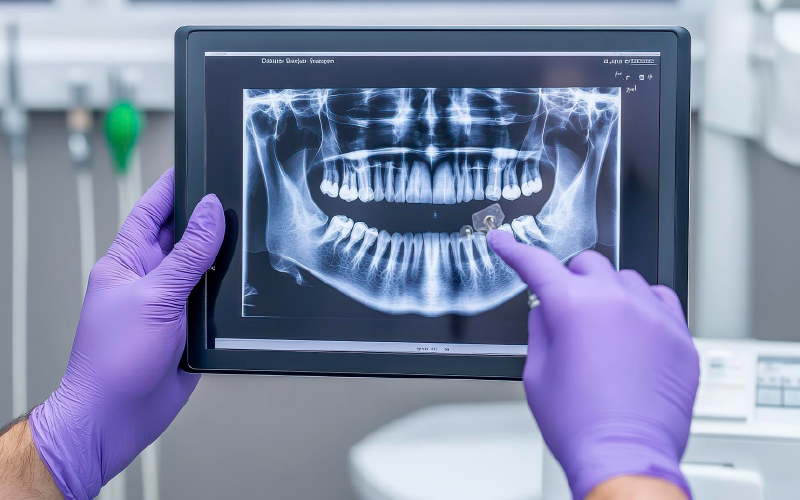In today’s modern dental care, technology plays a crucial role in enhancing the accuracy and effectiveness of treatments. One such advancement is digital X-rays, which have revolutionized how dentists diagnose and treat oral health issues.
High-definition dental X-rays offer a range of benefits, from providing clearer images to ensuring safer procedures for patients. If you’re seeking advanced dental care, dental X-rays in Gilbert, AZ, offer a significant improvement in diagnostic capabilities.
In this blog, we will explore three key benefits of using high-def dental X-rays and explain why they are becoming the preferred choice for both dental professionals and patients alike.
How Do Dental X-Rays Work?
Dental X-rays are an essential tool in general dentistry, often used during a general dental check up, allowing dentists to view the internal structures of your teeth, gums, and bones. During the procedure, a small sensor or film is placed in your mouth, and the X-ray machine directs a small beam of radiation through your teeth and gums.
The radiation passes through the soft tissues but is absorbed by denser areas like teeth and bone, creating a detailed image. This image is then displayed on a computer screen, helping the dentist identify issues such as cavities, infections, or bone loss that may not be visible during a routine exam.
Digital X-rays provide immediate results, enabling your dentist to make quicker, more accurate diagnoses and tailor your treatment plan for optimal care.
3 Benefits of High-Def Dental X-Rays
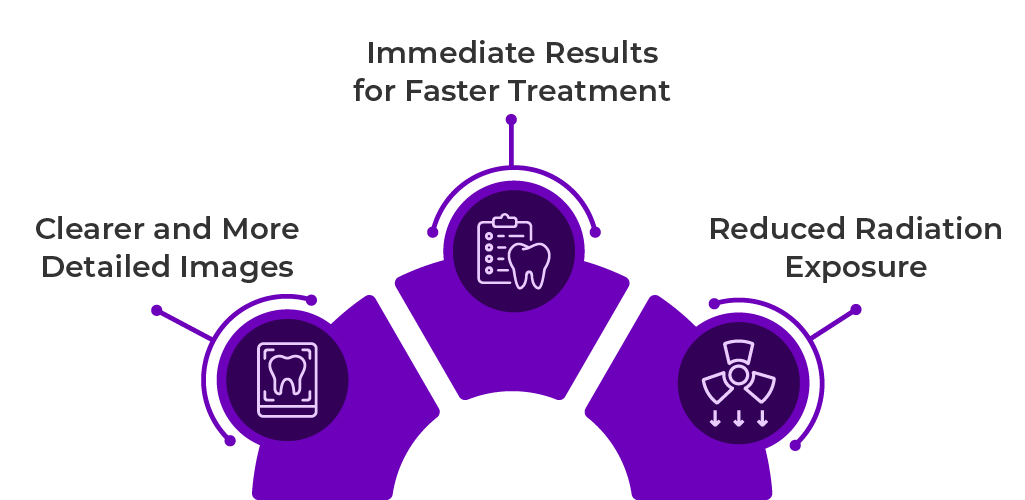
Clearer and More Detailed Images
High-definition digital X-rays provide much clearer and more detailed images than traditional X-rays. This allows dentists to detect dental problems such as cavities, bone loss, infections, and assess procedures like crown replacement more accurately, making it a significant advancement in dental technologies.
Reduced Radiation Exposure
Digital X-rays use up to 90% less radiation than traditional X-rays, making them a safer option for patients, especially those who require frequent imaging.
Immediate Results for Faster Treatment
With digital X-rays, the results are available almost instantly, allowing your dentist to make faster, more accurate decisions during treatments like teeth cleaning, improving the overall efficiency of your dental care.
Additional Benefits of Dental X-Rays
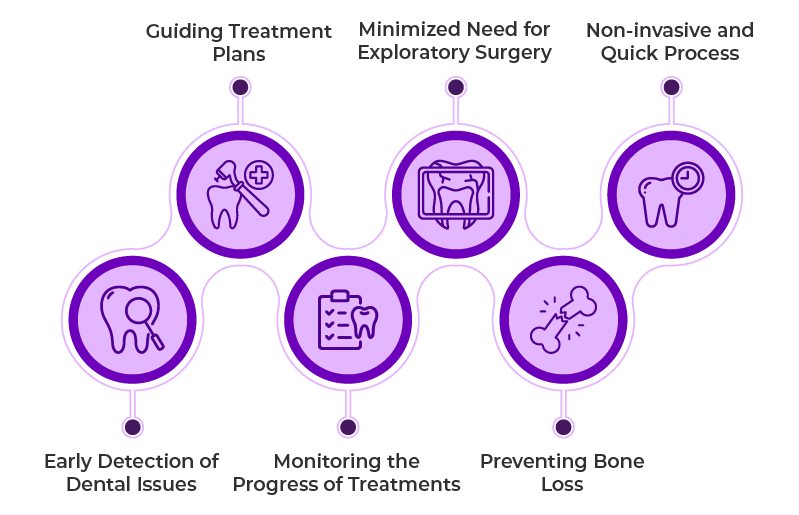
Early Detection of Dental Issues
Dental X-rays help detect problems that aren’t visible during a regular exam, such as cavities, infections, and impacted teeth. Early detection can prevent more severe conditions and ensure timely treatment.
Guiding Treatment Plans
Dental X-rays assist in planning procedures such as fillings, root canals, extractions, or even orthodontic treatments. They provide detailed information that helps your dentist create a more accurate and effective treatment plan.
Monitoring the Progress of Treatments
Digital X-rays allow dentists to monitor the progress of treatments, such as orthodontic care or healing after dental procedures. This ensures that the treatment is working as expected and that any necessary adjustments can be made.
Minimized Need for Exploratory Surgery
By providing a clear view of the internal structures, dental X-rays can help avoid unnecessary exploratory surgery, making diagnoses less invasive and more accurate.
Preventing Bone Loss
X-rays can detect bone loss caused by gum disease or other conditions. Early detection of bone loss can help prevent further deterioration, allowing for timely intervention to maintain oral health.
Non-invasive and Quick Process
The process of taking dental X-rays is quick and non-invasive, with no need for surgical procedures. It is a painless and efficient way for dentists to gather crucial information about your oral health.
Different Types of Dental X-rays
Intraoral X-rays
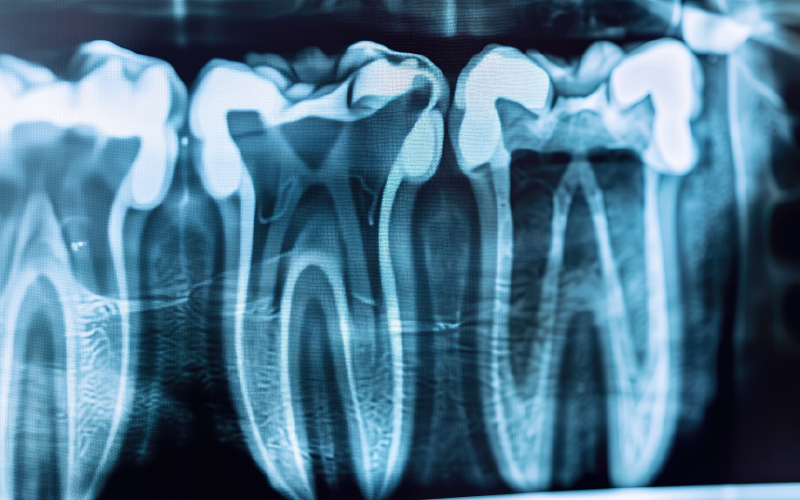
In intraoral X-rays, the film or digital sensor is placed inside your mouth. This is the most common type of dental X-ray and provides highly detailed images of the teeth and surrounding bone structure. Intraoral X-rays are primarily used to check for cavities, monitor the health of the bone surrounding your teeth, and detect any issues with the tooth’s roots.
There are different types of intraoral X-rays, such as bitewing, periapical, and occlusal X-rays, each serving a specific purpose in diagnosing dental issues.
Extraoral X-rays
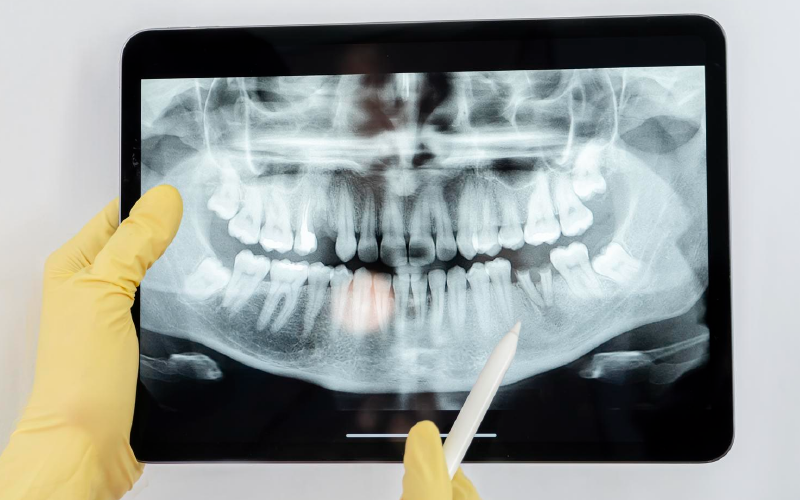
In extraoral X-rays, the film or sensor is positioned outside your mouth. These X-rays are typically used to capture images of the entire jaw, head, and neck area. Extraoral X-rays are helpful in assessing the alignment of the teeth and jaw and are often used in orthodontics and for detecting problems with the jawbone or surrounding structures.
A common type of extraoral X-ray is the panoramic X-ray, which provides a broad view of the entire mouth, including all the teeth, jaws, and surrounding structures.
Both types of X-rays are essential tools in modern dental technologies, allowing dentists to detect issues that aren’t visible during a routine dental exam and helping them create more accurate and effective treatment plans.
Conclusion
Incorporating dental X-rays into your routine dental care offers numerous benefits, from early detection of issues to guiding effective treatment plans. With advanced technology like digital X-rays, patients experience safer, quicker, and more accurate diagnostics. Whether you’re looking for preventive care or need a treatment plan for existing concerns, dental X-rays play a crucial role in maintaining your oral health.
To experience the benefits of modern dental technologies and receive personalized care, visit Kathy Jackson’s Dentistry and trust a skilled female dentist in Gilbert, AZ for all your dental needs.

FAQs:-
Can Dental X-rays Show Decay?
Yes, dental X-rays can reveal decay that may not be visible during a regular examination. Even if a tooth appears healthy, an X-ray can show if there is decay beneath the enamel, potential infections in the root, or bone loss around the tooth. X-rays also help your dental team detect issues between your teeth or under the edges of existing fillings.
Are Dental X-rays Safe?
Yes, dental X-rays are considered safe. Modern dental technologies have significantly reduced the amount of radiation used compared to older X-ray methods. Digital X-rays, in particular, use up to 90% less radiation than traditional X-rays, making them a much safer option for patients.
How Are Dental X-rays Done?
Before taking dental X-rays, a technician will drape a lead apron over your chest and may place a thyroid collar around your neck to shield you from unnecessary radiation exposure.
During the procedure, you will either sit in a chair or stand in front of the X-ray machine. The technician will position the film or sensor in your mouth (for intraoral X-rays) or outside your mouth (for extraoral X-rays). Once in place, the technician will activate the X-ray machine, and you’ll be asked to remain as still as possible for a few moments while the image is captured.
This process is quick, and the technician will guide you throughout to ensure your safety and comfort.


